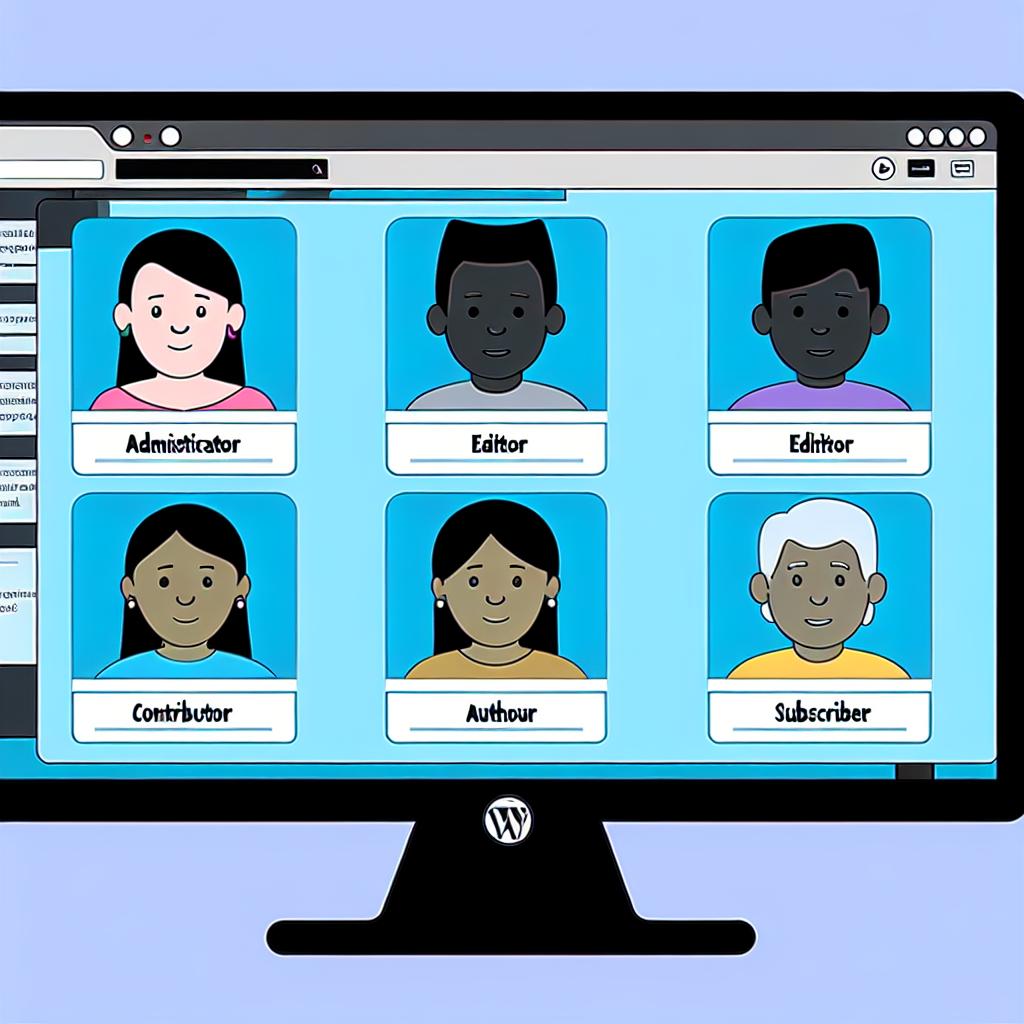Understanding WordPress User Roles and Permissions
WordPress stands as one of the most powerful content management systems (CMS) globally, and one of the key reasons for its popularity is its logical approach to user management. At the heart of this system lies a well-defined role-based permission model. This framework is essential not only for enhancing the workflow within an organization but also for ensuring the site’s security. As a WordPress administrator or content creator, gaining a detailed understanding of these user roles and permissions is critical for maintaining a seamless operation of your website.
The Importance of User Roles
User roles in WordPress serve as the backbone for managing what different individuals can do within a website. These roles facilitate the process of distinguishing between various levels of user engagement and actions, which, in turn, helps assign appropriate responsibilities and access controls. By correctly assigning roles, you ensure that individuals only have access to the necessary parts of the site, thus maintaining content integrity and safeguarding sensitive information. For any WordPress site administrator, effectively understanding and leveraging these roles can make a significant difference in how a site is managed.
Core User Roles in WordPress
Out of the box, WordPress provides six default user roles, each tailored with specific capabilities. These roles are designed to accommodate typical organizational needs, ranging from full administrative access to simple content viewing.
Administrator
As the highest-tier role within WordPress, the Administrator possesses extensive capabilities. Individuals with this role can perform virtually any task on the site. Their responsibilities include content creation, website settings management, theme customization, plugin management, and site-wide settings alterations. Because of these extensive privileges, it’s critical to limit this role only to trusted individuals within an organization.
Editor
Editors are the gatekeepers of content. This role caters primarily to those who manage the site’s content output and overall quality. Editors hold the authority to publish, edit, and delete posts, as well as oversee and manage content generated by all other users except Administrators. They play a crucial role in maintaining content standards and coherence within the site.
Author
Authors are empowered to manage content independently, albeit with some limitations. They can write, edit, and publish their own posts but cannot alter or delete content that belongs to others. Moreover, they have no access to site settings or configuration tools, which keeps the focus solely on content creation.
Contributor
Contributors operate in a more restricted capacity when it comes to content. While they have the ability to draft and edit their posts, they are not permitted to publish them. This limitation necessitates approval from an Editor or Administrator before their content can become live. This role is particularly useful for guest writers or new staff who are still becoming accustomed to site protocols.
Subscriber
Subscribers have the most constrained access within the WordPress hierarchy. They are usually site members who need only to read content and manage their personal profiles. This role is typically applied on sites that require registration to access particular content sections. This role highlights the focus on maintaining a distinction between content creators and content consumers.
Customizing User Roles
While the default roles in WordPress cater to a broad range of needs, customization can be integral to certain businesses or organizations. By utilizing plugins like the User Role Editor, site administrators have the flexibility to modify existing roles or create new ones. This customization offers an avenue to tailor WordPress’s functionality to mirror specific operational requirements or to address emerging needs as the site grows. For instance, you might create a role specifically for SEO experts, granting them access only to the publisher tools they need.
The Concept of Capabilities
The foundation of WordPress roles lies in their associated capabilities. Each role is constituted by a collection of these capabilities, with each representing distinct permissions or abilities within the system. For instance, capabilities such as publish_posts or edit_users demarcate the actions users can perform. Understanding these capabilities means administrators can refine how permissions are doled out, vital for achieving precise control over user actions. This granularity not only ensures security but also allows for a more efficient role delegation grounded in operational necessity.
Implementing Effective Role Management
For sustaining an optimized WordPress site, implementing a well-thought-out role management strategy is indispensable. Ensure to appoint roles that seamlessly reflect individual responsibilities and broader organizational objectives. Regular audits and adjustments of roles and permissions are necessary, especially as the site evolves in terms of content complexity and user interaction. By keeping permissions aligned with user needs and site goals, you maintain a robust security posture and support smoother operational workflows. Such proactive role management fosters a controlled yet dynamic web environment capable of scaling with digital demands.
In summary, exerting thoughtful control over WordPress user roles and permissions is a cornerstone of effective site administration. This system offers significant flexibility and security, allowing administrators to fine-tune user access based on precise requirements. By maximizing the potential of these roles, site managers ensure that content management and administrative tasks proceed within a secure and well-regulated framework. Understanding and appropriately leveraging user roles and permissions is an intrinsic component of optimizing both the functionality and security of any WordPress-based website.
